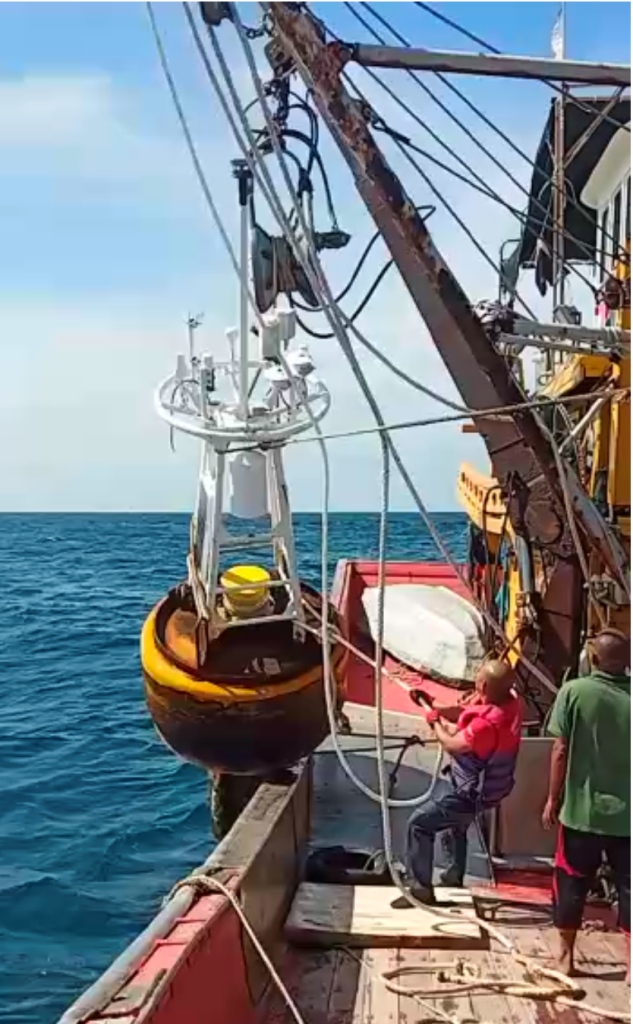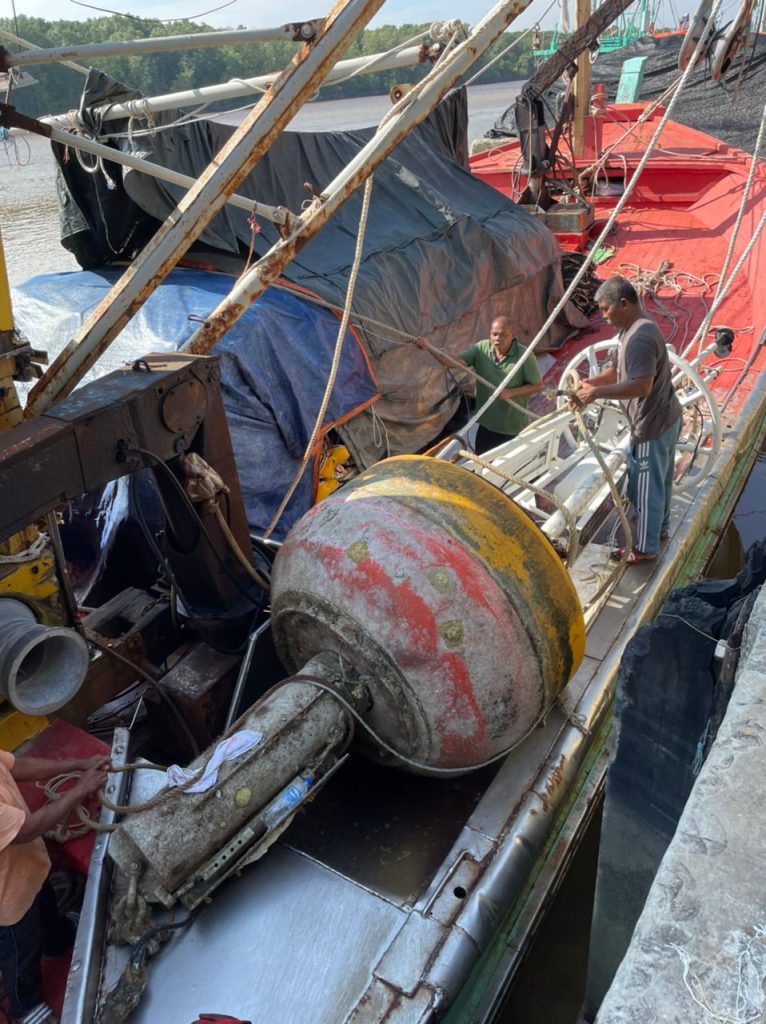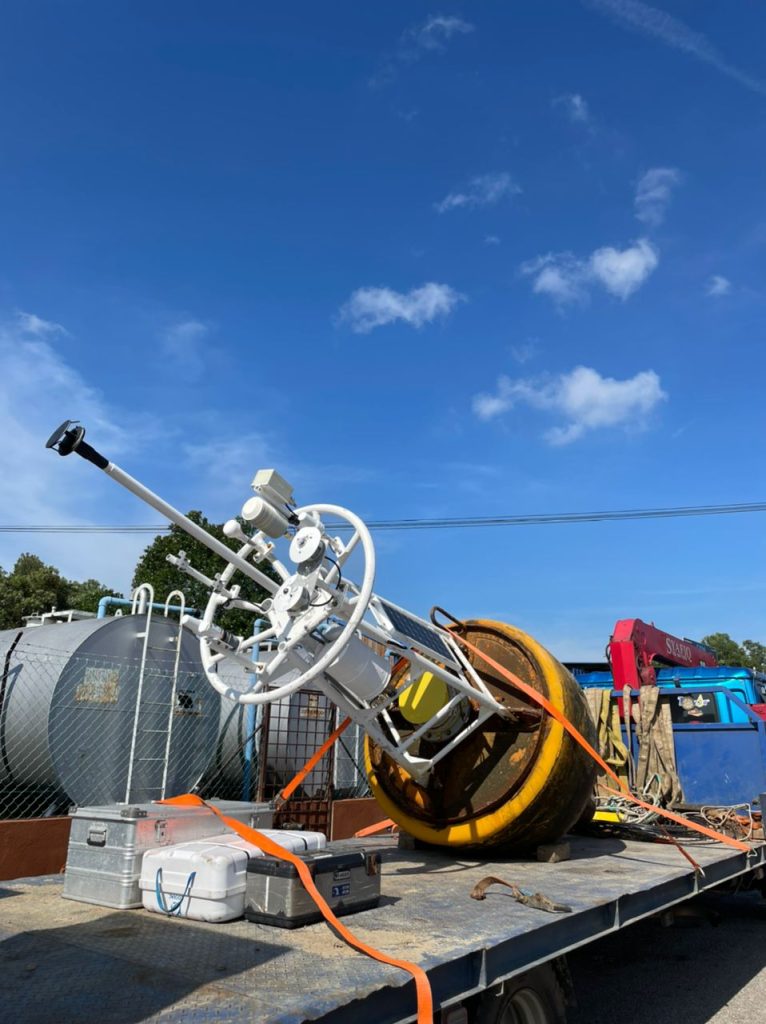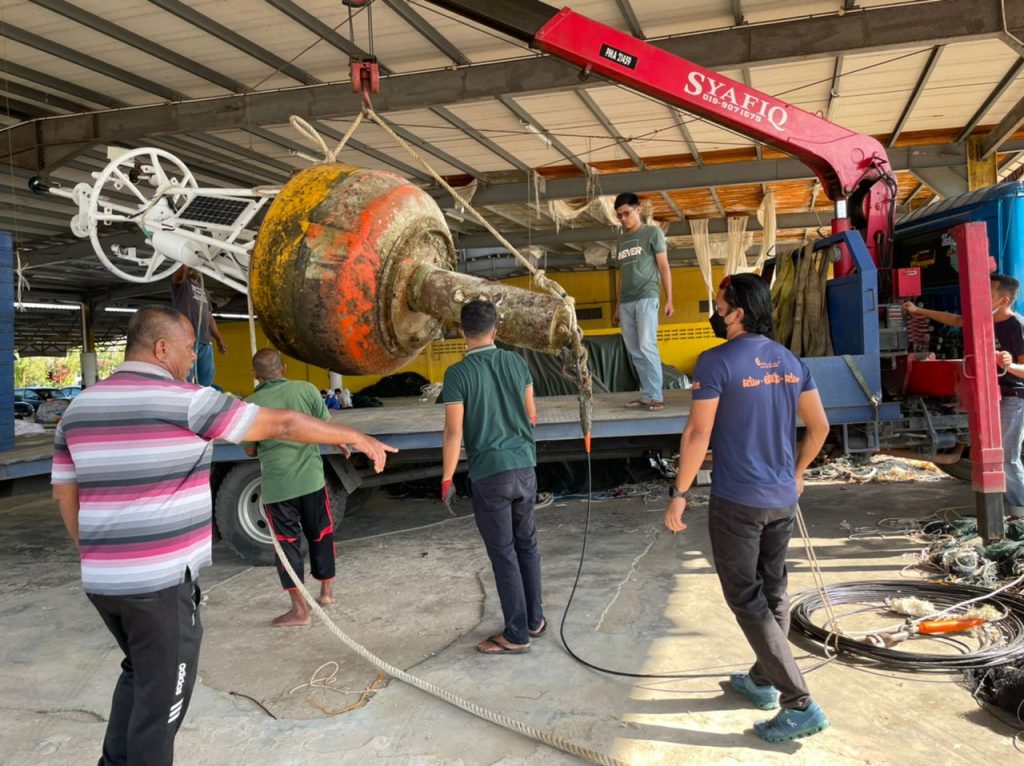
After almost 1,300 days in the South China Sea, UMT’s ocean buoy valued at almost RM1million floated around 70nm (130km) from the coast finally snapped and drifted away.
After collecting more than hundreds of thousand of data, notably capturing Typhoon Pabuk (2019) and Typhoon Rai tail effect recently, and providing scientist with valuable information, the ocean buoy was tracked only by GPS signal that sent it position every 4 hours.
Without searching location like Waze or Google Maps, the searching process was challenging, especially during the monsoon season. But luckily, we were equipped with our in-house MFAST forecast system that managed to predict up to 5 days drifting.
The buoy is equipped with automated weather system sensors and temperature and salinity (CTD) sensor. The data is transmitted in almost real-time through satellite communications.
After almost 7 days and drifted as far as 350km from its location, we managed to bring the buoy home.

INOS prompt SAR mission lead by Physical and Geological Oceanography Lab Technical Manager Shukri and his team Roslan and Azri. Of course, it would not be possible without the tireless effort of fishermen crew boat from Kuantan that made this mission a success. A truly remarkable and valuable experience.
This buoy has been very instrumental in providing continuous data support towards our marine forecast system. Malaysia Marine Forecast System (MFAST) is the 1st national operational marine forecast that offers 5-days prediction of ocean current, wave and temperature data that will support marine-related operations, activities and search and rescue mission.
The fact that the buoy were able to be accurately located by our MFAST, testifies the reliability of our forecast system. The system if far from perfect, but at this current performance, we hope it can be used by various sectors in the maritime and marine-based industries to support their operation.








Copyright © INOS | Institute of Oceanography and Environment | Universiti Malaysia Terenganu | 2024. All rights reserved.